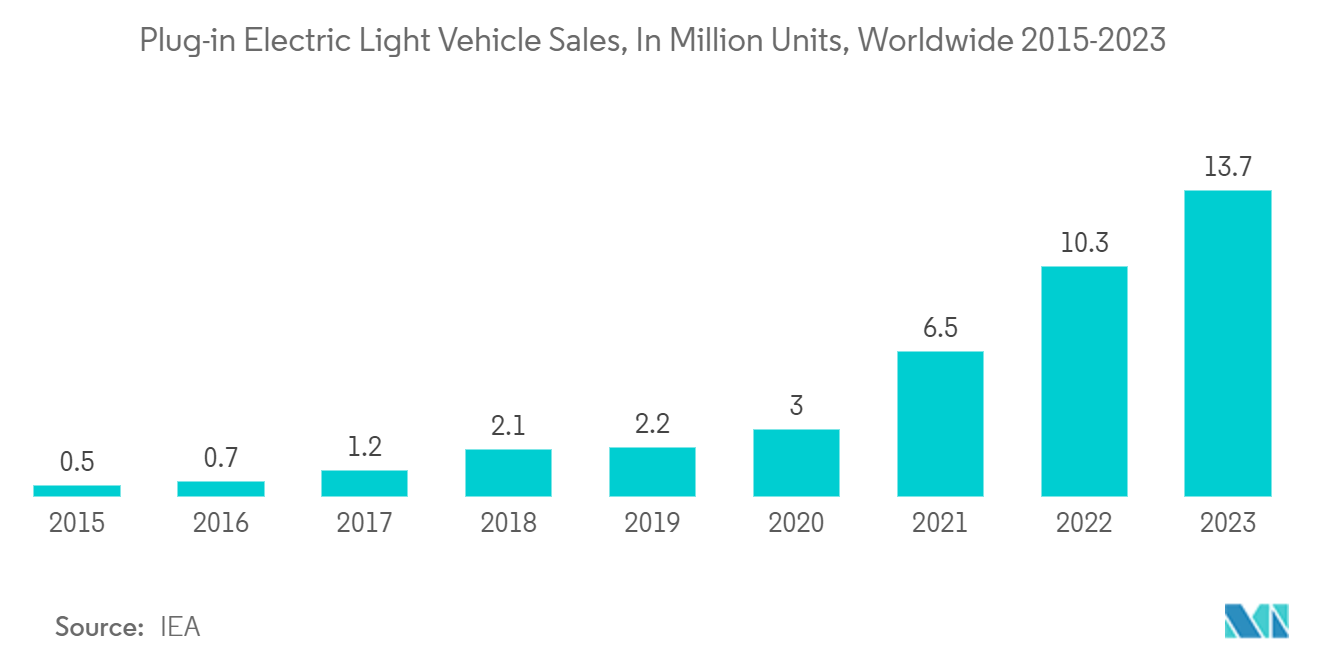Market Trends of Infrared Sensor Industry
Automotive Industry to be the Fastest Growing End User
- As competition within the automotive market intensifies due to technological advancements, consumers increasingly prioritize vehicles that promise enhanced safety, reliability, and an overall superior driving experience. This heightened consumer interest has spurred the development of autonomous vehicles, propelling the demand for electronic devices within the automotive sector. The challenge lies in replacing the capabilities of the human brain in sensing, processing, activation, feedback, and control functions with electronics, which is an exhilarating and daunting task.
- The Society of Automotive Engineers (SAE), an American engineering group setting automotive standards since 1905, outlines six levels of vehicle autonomy. According to the US Energy Information Administration, Level 5 autonomy signifies full automation, which means a vehicle can efficiently perform all driving functions under all conditions.” This encompasses operating autonomously in adverse weather and nighttime conditions. Such effective perception is vital, given these scenarios frequently lead to vehicular accidents.
- FIR's prowess extends to producing consistent images under varying lighting conditions. Unlike regular CMOS images, which can be influenced by an object's color, background, illumination direction, multiple light sources, specular reflections, and other lighting-induced anomalies. FIR images remain steadfast.
- For example, while CMOS cameras adeptly detect lanes and road markings, they often falter in pinpointing the drivable road area even in broad daylight due to significant visual discrepancies. In contrast, FIR images maintain a consistent visual road appearance across diverse lighting scenarios. This consistency is paramount for autonomous vehicles, ensuring they perceive their environment with the clarity needed to respond to both living and non-living entities.
- The global market is witnessing a surging demand for plug-electric vehicles (PEVs). According to the International Energy Agency (IEA), approximately 13.7 million plug-in electric light vehicle (PEV) units were sold in 2023. Electric vehicles' burgeoning popularity underscores their market appeal and highlights their promising growth prospects. This is particularly evident as advanced thermocouples and infrared sensors play a pivotal role in measuring temperature gradients across inverter power electronics, ensuring thermal equilibrium and prolonging EV motors’ lifespan.

Asia-Pacific to Register Major Growth
- The Asia-Pacific region is home to some of the largest consumer electronics manufacturers globally, including companies in Japan, South Korea, China, and Taiwan. The rising demand for IR sensors is driven by their use in smartphones, tablets, and other smart devices for applications like facial recognition, proximity sensing, and remote.
- The demand for infrared sensors (IR sensors) in the region is rising owing to advancements in various sectors such as automotive & transportation, renewable energy, and other industries that utilize Infrared sensors (IR) extensively. For instance, as the most prominent automotive producer, China's massive vehicle manufacturing scale contributes to the high demand for IR sensors. The need to equip millions of vehicles with advanced sensing technologies creates a substantial market for IR sensors.
- According to China's Development Plan for the New Energy Automobile Industry (2021-2035), electric vehicles could capture a 25% market share by 2025. Consequently, China is implementing more assertive measures to incentivize the adoption of electric vehicles, thereby expediting the adoption of discrete semiconductors for their extensive utilization in EVs.
- In August 2023, CAAM reported that China manufactured 589,000 battery electric vehicles (BEVs), comprising 551,000 passenger BEVs and 38,000 commercial BEVs (battery electric vehicles). Additionally, 254,000 plug-in hybrid electric vehicles (PHEVs) were produced in China during the same month, with 253,000 being passenger PHEVs and 1,000 being commercial PHEVs.
- In June 2024, GalaxEye Space partnered with iDEX DIO, an initiative under the Ministry of Defence, to create a new multi-sensor fusion processing system. This system is designed for compact satellites that accommodate multiple payloads weighing up to 150kg, specifically for the Indian Air Force (IAF). The advanced system will first process data from infrared sensors and then relay it to ground stations.


